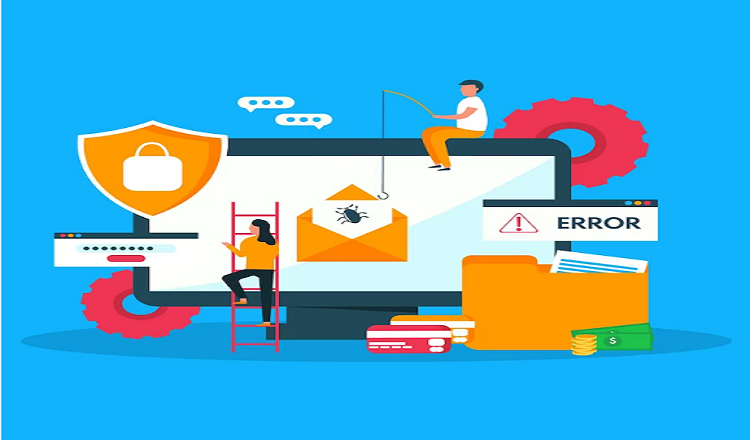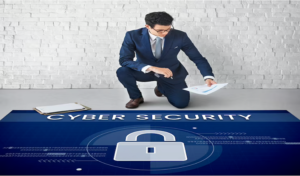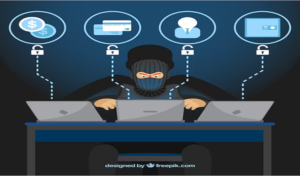How to prevent ransomware attacks and protect your data

Ransomware attacks have become one of the most dangerous things that can happen to companies and people in the United States. This malicious software is made to lock users out of their own computers or encrypt their files until a ransom is paid, making it impossible for them to view their own files. As ransomware attacks become more common, both people and businesses are getting more worried about losing sensitive data or having it held hostage.
Businesses aren’t the only ones at risk; ransomware attacks can also happen to people. During a ransomware attack, private photos, financial information, and other personal data can be stolen. This makes the victims feel violated and helpless. A ransomware attack can be devastating, both financially and emotionally, and the fear of losing important data is becoming a growing worry for everyone.
In this piece, we’ll talk about how to protect your data in the United States from ransomware attacks. We’ll talk about the most popular kinds of ransomware attacks, how they work, and what you can do to keep your data safe. If you follow these tips, you can help make sure that you won’t be the next person who gets hit by ransomware. So, let’s get started and find out how to keep your info safe.
How to Understand Ransomware
Ransomware is a type of malicious software that can lock or encrypt a computer user’s files, making them unavailable until a ransom is paid. In the US, this kind of attack is becoming more and more popular. Cybercriminals use phishing emails, malicious downloads, and software vulnerabilities, among other things, to get into their victims’ computers.
There are two main types of ransomware attacks: ones that use encryption and ones that lock the screen. Encryption-based ransomware makes the files of the target unreadable until a ransom is paid. Lock-screen ransomware, on the other hand, works by locking the computer screen of the victim and showing a message that says the screen can only be unlocked if the victim pays.
Understanding the different kinds of ransomware attacks and how they work is very important if you want to stop them from happening. People and companies can protect themselves from the terrible effects of ransomware attacks by staying informed and taking precautions.
Ransomware attacks and how they happen
Ransomware attacks in the United States can happen in many different ways, such as through phishing emails, malicious files, and software bugs. For example, phishing emails try to get users to click on a link or open an attachment that includes malware. Malicious downloads can also put ransomware on a user’s computer. Often, these downloads come from sites that look like they are safe. A user’s computer can also be vulnerable to ransomware threats if it has software flaws, like old software or unsecure networks.
Most of the time, cybercriminals use social engineering to get people to download malware. This can be done by pretending to be a trusted source or playing on a user’s emotions to get them to click on a link or download an attachment. When people and companies know how ransomware attacks work and what tricks cybercriminals use, they can take steps to protect themselves and stop ransomware attacks from happening.
How to Keep Ransomware Attacks from Happening
In the US, you can stop ransomware attacks by taking steps to protect your files and devices. Having a backup plan is one of the most important things you can do. This means that you should back up your files regularly in a safe place so that if ransomware attacks, you can get your files back without paying a ransom.
Ransomware attacks can also be stopped by using anti-malware software and firewalls, which find and block malicious files and links. Keeping your software and running systems up-to-date is another important way to stop ransomware attacks. Software updates often include important security patches that fix holes that cybercriminals can use. By taking these steps, people and companies can protect themselves from the effects of a ransomware attack, which could be very bad.
How to keep your files safe
In the US, it’s important to protect your info so that it doesn’t get into the wrong hands. Data encryption and password safety are two important steps to take. Encrypting data means changing it so that only people who are allowed to read it and have the right key can read it. To stop unauthorised access, password security involves making strong, unique passwords and changing them often.
Multi-factor authentication adds an extra layer of security to your accounts by requiring extra verification, like a fingerprint or a code sent to a mobile device, before allowing entry. When you use public Wi-Fi, Virtual Private Networks (VPNs) can also protect your data by encrypting your internet traffic and sending it through a safe server. By taking these steps, you can make it much less likely that your info will be stolen.
What to do if ransomware locks up your files
If you think you have been hit by ransomware in the United States, you need to move quickly to stop more damage. To stop the malware from spreading, you should first unplug your device from the internet and any other network. Next, get help from a professional computer expert. They can look at the situation and help you get rid of the ransomware.
It is very important not to pay the ransom, since doing so doesn’t ensure that your data will be returned and can help criminals keep doing what they’re doing. Instead, you should focus on getting your data back from backups and taking steps to stop future attacks, such as keeping your software up to date and making your security better. By taking these steps, you can get back on your feet after a ransomware attack and be better prepared for other threats in the future.
Conclusion
In conclusion, ransomware attacks are becoming more of a problem in the US, and it is important to protect your data and gadgets by being proactive. The story talked about several important points, such as what ransomware is and how it works, how ransomware attacks usually happen, and what you can do to stop them.
A ransomware attack is much less likely if you take steps like making backups, using anti-malware software and firewalls, and keeping your software and running systems up to date. It’s also important to secure your data, use strong passwords and multi-factor authentication, and avoid using public Wi-Fi without a VPN.
If you do get hit by ransomware, it is important not to pay the fee and instead get help from a professional to get rid of the malware. You can avoid the possibly disastrous effects of a ransomware attack by being prepared and taking steps to protect your data. Remember that prevention is always better than treatment, so don’t put off protecting your data from ransomware threats until it’s too late.
Read More You May Like:
- Effective cybersecurity measures for businesses and individuals
- Combating phishing and social engineering attacks
- Building a robust cybersecurity strategy for the long term
- Analyzing the role of artificial intelligence and machine learning in cybersecurity
- Understanding the psychology behind cybercrime








